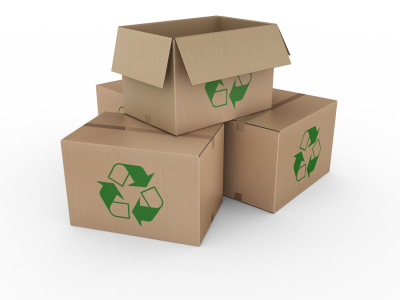
A sustainable supply chain is good business. Through sustainable practices, you can save resources and money, optimize supply chain processes and discover ways to innovate your product.
A recent Accenture survey for members of the United Nations Global Compact on sustainable business practices showed that 96 percent of CEOs believe sustainability should be integrated into all aspects of operations, with 88 percent singling out the supply chain as a specific area to address.
These statistics shouldn’t be a surprise. After all, according to the EPA, more than 75 percent of greenhouse gas emissions come from a business’s supply chain.
There is clear pressure to make businesses more efficient while conserving the environment, by way of improved logistics operations. Here are five tips for more sustainable supply sourcing.
1. Advocate Sustainability
Sixty-six percent of global consumers say they’re willing to pay more for sustainable brands. Clearly, sustainability is crucial to future success. To successfully implement sustainable practices into supply chain operations, leadership must actively advocate sustainability as the way to improve long-term brand equity.
There are many initiatives you can launch to show management’s commitment to sustainability. You could start by using only eco-friendly packaging made from 100-percent recycled materials, such as Pratt’s recycled corrugated boxes. This would send the right message to your team, suppliers and customers.
2. Communicate Expectations
Your first step is to instill values of sustainability and best business practices in your own organization, but you must remember your supply chain involves outside organizations and people as well. In other words, you have to communicate expectations. Proper communication is more than just handing over guidelines; you need to make suppliers and customers understand why sustainability should be a priority.
After you communicate expectations, reinforce the importance of following these sustainability practices. If not, warn them you’ll go elsewhere if changes aren’t made, like Apple does. The tech company gives suppliers 90 days to correct sustainability violations.
3. Train and Support
Of course, driving behavioral changes throughout your supply chain also requires necessary training and resources, implemented through a learning program.
For instance, HP runs a large capacity-building program that educates workers and suppliers on all aspects of sustainability, from energy efficiency and lean management to labor rights and anti-discrimination.
4. Measure performance
Compliance with sustainability policies and procedures is essential, but sustainability is more than just a box-ticking exercise. You will require thorough onsite audits that show what local practices are like and also highlight challenges to sustainability.
For this step, you should establish a universal, consistent framework for assessing sustainability in your supply chain. The Sustainable Apparel Coalition, for example, developed the Higg Index that aims to provide a holistic picture of sustainability performance. To ensure suppliers are fully transparent and have the incentive to meet evaluation demands, make sure you develop a system that rewards them for excellent sustainability performance.
5. Work with Others
Solving supply chain challenges can be difficult on your own if you don’t have the time and/or resources. The solution here is to network with industry peers and join relevant groups, so you can exchange knowledge and discover new ideas on nagging issues. You can also set up collaborations to improve sustainability at a more efficient pace.
There are abundant sustainability organizations out there; find one in your industry to join. For example, if you are a clothing retailer, you could join the Zero Discharge of Hazardous Chemicals (ZDHC) Program. ZDHC aims to eliminate the use of hazardous chemicals in the global footwear and textile value chain.
Realizing a More Sustainable Supply Chain
First, make supply chain sustainability a priority. Then, communicate expectations, provide appropriate training and assess performance. You can round out your transition with networking and collaboration. If you have a good sustainability strategy and remain committed, you can realize a truly sustainable supply chain.
About Pratt Industries as a Sustainable Supplier
Pratt Industries is widely known throughout the industry as a leading supplier of sustainable packaging and display solutions for companies large and small. Pratt’s commitment to the environment extends far beyond its pledge to produce 100% recycled paper and packaging. We have also invested heavily in clean energy production, including our waste-to-energy plant, operational at our Conyers HQ since 2009 and the rooftop solar photovoltaic system that was installed at our New York City box plant last year. Contact us to learn more!